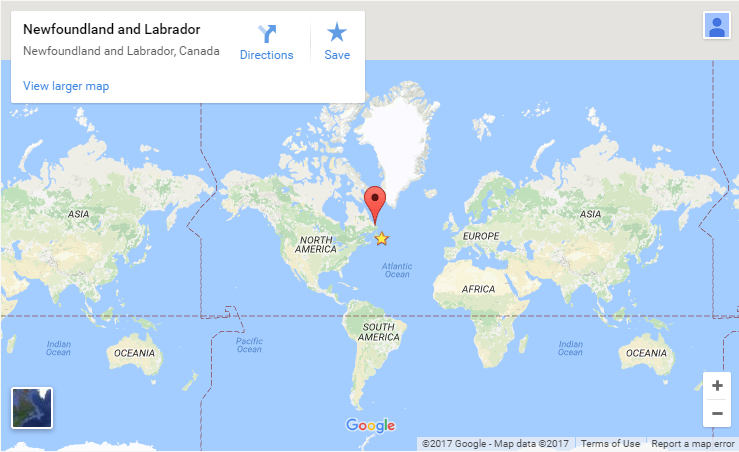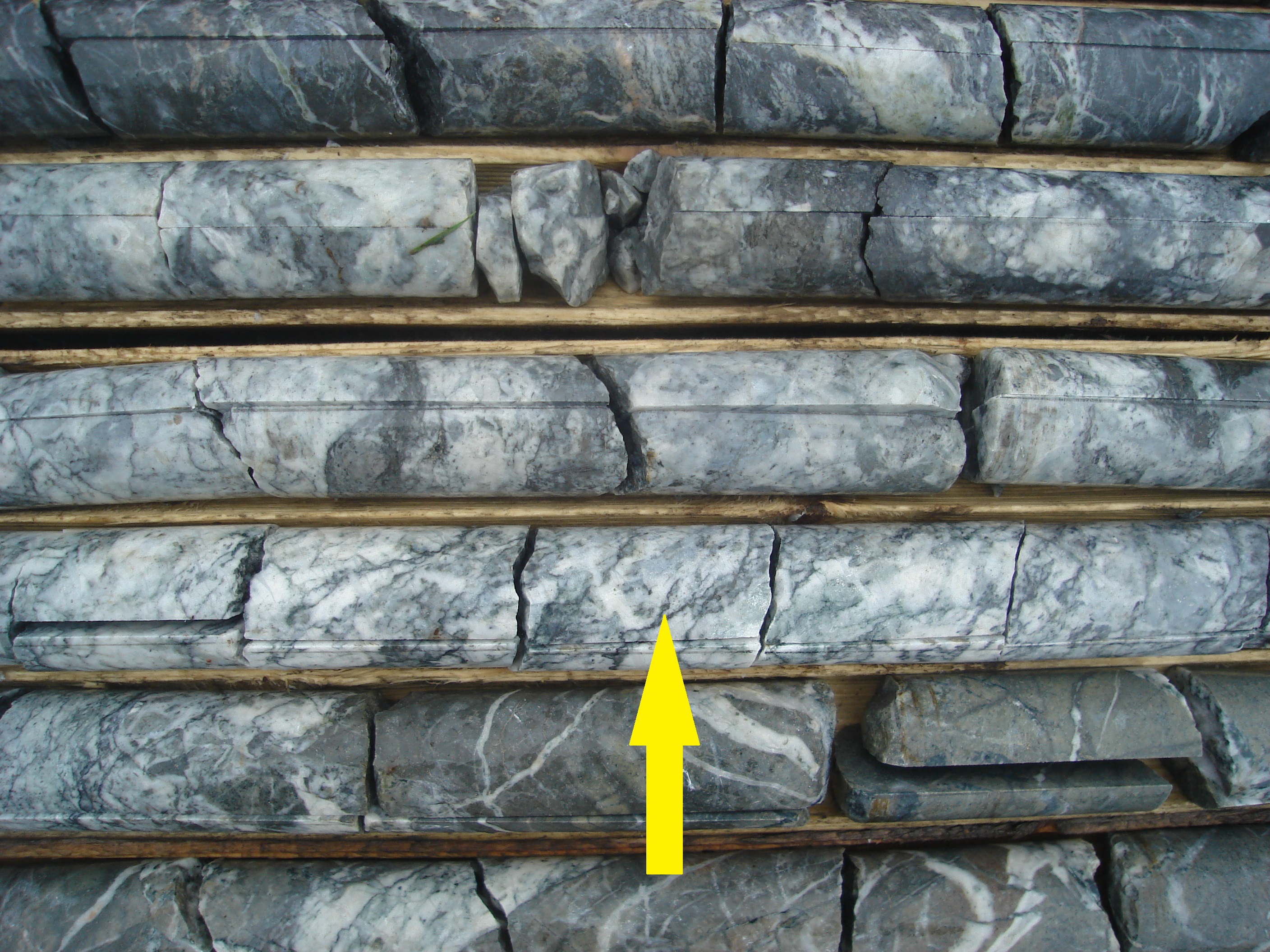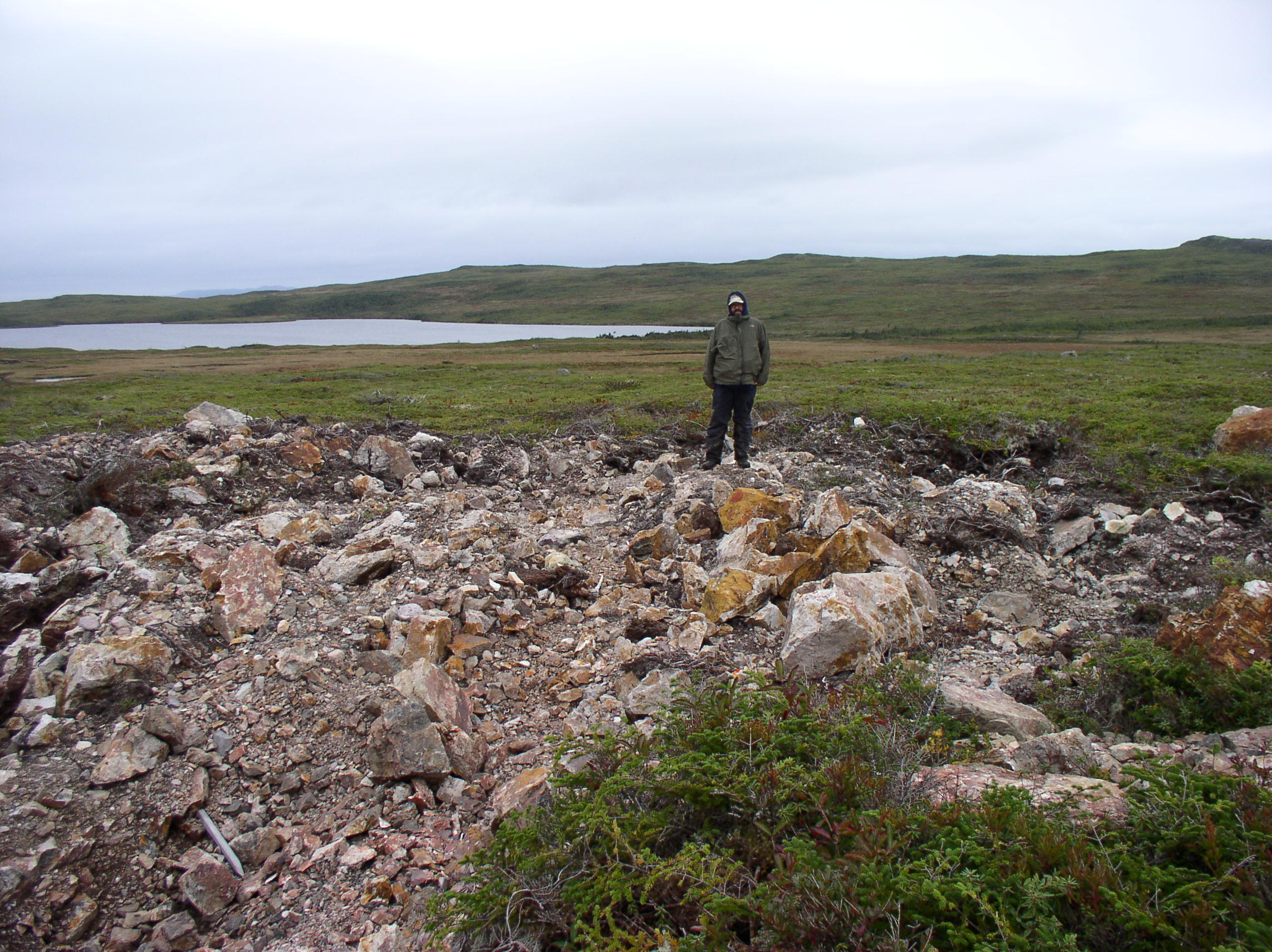Newfoundland - A Globally Favorable Mining Jurisdiction
Map showing the location of the Heritage Project (the red pin) in the highly strategic location of Newfoundland along the eastern seaboard of North America. Newfoundland is an attractive jurisdiction for mineral exploration and mining due to many factors which include the absence of land tenure issues, the ease of permitting, and a proactive mining tax & royalty regime promoted by the provincial government.
Milestone Events
2010- Gold and Silver discovered by local prospectors in a relatively unexplored area of insular Newfoundland
2011- Prospectors offer project to Puddle Pond Resources Inc.
2012- PPR options project from prospectors and commences fieldwork which uncovers the gold & silver at 16 separate prospects
2013- Eagle Zone high grade gold and silver is discovered and immediately earmarked for drill testing (1,458m) which not only intersected the high grade gold and silver mineralization but outlined a zone measuring at least 300 metres.
2014- Puddle Pond acquires 100% ownership of the Heritage Project
2015- 25 Drill holes totalling 3,000 metres at Eagle Zone outlines a preliminary gold and silver mineral inventory within the 300m section discovered in 2013. Several exploratory step-out holes indicate mineralization continues.
2016- In September Dr. Jeff Hedenquist, a world-recognized expert in the type of gold & silver mineralization at Heritage visits project site and validates the authenticity of the project and the several areas of untested potential.
20 drill holes totalling 2,386 metres further confirm potential for mineral inventory at Eagle Zone. This drilling at Eagle Zone also intersected the best assay value to date with a spectacular silver assay of 10.52 kilograms per tonne accompanied by 43.5 grams per tonne gold – This very high grade assay represents a value of $10,000 per tonne of mineralized rock.
Potential for new mineralized zones were confirmed with the discovery of two areas of high grade mineralized boulders with values ranging up to 847.6 g/t silver and 12.2 g/t gold. These new discoveries suggest the Eagle Zone may extend up to 2 kms and up to 4 times the length of the gold and silver mineralized zone drilled to date.
2017- Mineral inventory established by independent engineering & mining consultant. This inventory consists of 76,074 ounces (2,366,054 grams) of gold equivalent mineralization contained within approximately 1.08 million tons at a grade of 2.186 g/t gold equivalent. (Gold equivalent equals gold + silver expressed as gold whereby 70 g/t silver = 1 g/t gold.)
Point May, Newfoundland. Along the coastline of the Atlantic Ocean
Heritage Gold and Silver Project
- In 2017 gold and silver mineral inventory established at the Eagle Zone, one of 18 zones/prospects discovered on the Heritage Project
- Intense epithermal alteration uncovered over a 4.5 km strike length
- Widespread anomalous Gold(Au)-Silver(Ag) values over an area of 4.5 kms x 2.5 kms (1 remote prospect is 16 kms north of the main area)
- Strong surface mineralization up to 117 g/t Au and 2769 g/t Ag
- The strong mineralization is confirmed in drill core ranging up to 46.5 g/t Au and 10,516 g/t(10.516kg/t)Ag recently intersected in 2016
- The Heritage Project is located in a mining friendly jurisdiction with no land tenure issues on the Burin Peninsula near the coastal community of Point May, Newfoundland, Canada.
- The southern boundary of the property is crosscut by the main highway as well as transmission lines
- Pre-established trails provide excellent access to all regions of the property.
- Strategically located near two ice free deep water ports Marystown, and the mining community of St. Lawrence.
- Highly strategic and accessible location allows for very efficient operations
- The Heritage Project is defined as a low sulphidation epithermal deposit with Au-Ag mineralization contained in pervasive quartz veins. These systems are known to have rich intersects known as “sweet-spots” with Bonanza grade Au-Ag; even though the Heritage Project is at an early stage it is already displaying Bonanza grades.








